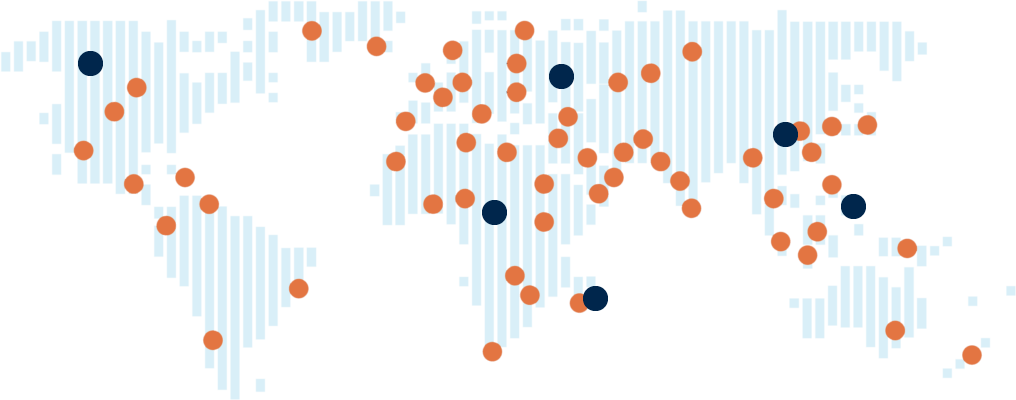Asia Pacific
The MSCI Pacific Index declined 6.3% in the week ending 8 January.
Japan’s Topix dropped 6.5%. Exporters struggled on concerns over competitiveness as the yen strengthened significantly against the US dollar, supported by global risk aversion and reduced expectations for action from the Bank of Japan. Exporters were also hit by concerns that they will be disadvantaged by China’s ongoing currency devaluation.

With Chinese visitors accounting for almost 80% of tourist arrivals into Hong Kong, China’s currency devaluation casts a cloud over the outlook for tourism and tourist spending this year.
Australia’s All Ordinaries was 5.5% lower in the week, hit by declines in mining stocks and a weakening Australian dollar amid further weakness in commodity prices. Singapore’s Straits Times was down 4.6%.
United states
US equities began 2016 with their worst week since 2011 as heavy losses on Chinese markets sparked a global sell-off. The Dow Jones slid 6.2%, while the broad S&P 500 was down 6.0% and the technology-focused NASDAQ dropped 7.0%.
Heightened worries over China’s growth prospects, further renminbi weakness and the scheduled expiry of a ban on selling by large investors contributed to plunging prices on mainland Chinese exchanges on Monday 4 January, triggering the new circuit breaker rule for the first time. With the turmoil continuing throughout the week, global commodity prices slumped and risk aversion hit global equities.
Geopolitical concerns added to the uncertainty as North Korea claimed it had successfully tested a hydrogen bomb and tensions mounted between Saudi Arabia and Iran following the execution of a prominent Saudi Shia cleric.
Domestic economic news was also unsettling, with US manufacturers experiencing their worst month in more than six years in December. The Institute for Supply Management’s (ISM’s) index of manufacturing activity fell to 48.2, the weakest reading since June 2009, marking a second consecutive month below the 50 threshold that separates expansion from contraction.
Ten of the 18 industries surveyed by the ISM reported slowing activity in the month as weak overseas demand, a stronger US dollar and low oil prices hit demand for US goods. The new order measure was slightly improved compared to November, but remained in contractionary territory.
Employment data painted a much healthier picture of the US economy. Non-farm payrolls rose by 292,000 in December, well ahead of expectations, while the October and November readings were revised up by a total of 50,000. The unemployment rate, which is calculated separately, was unchanged at 5%.
In normal circumstances, the very strong payrolls data may have raised fears that the Federal Reserve would increase interest rates at a faster pace than anticipated. However, investors took the view that market turbulence and global growth fears would limit the scope for the US central bank to tighten monetary policy.
The fourth-quarter earnings season gets underway in the US this week, with 11 of the largest companies scheduled to publish their results for the October-December period. Analysts estimate that profits for members of the S&P 500 fell 6.7% in the last quarter, according to Bloomberg.
Europe
China-related nervousness, coupled with a continued slump in oil prices and some weak economic data, helped push European markets sharply lower in the first trading week of 2016. The MSCI Europe Index was down 6.3%.

Elsewhere, Italy’s FTSE MIB fell 7.2%, Spain’s IBEX 35 was down 6.7%, the French CAC 40 fell 6.5%, Switzerland’s SPI lost 6.2% and the UK’s FTSE 100 dropped 5.3%.
China was the main concern as further economic worries and a sharp weakening in the currency sparked precipitous declines in local stock markets—forcing the authorities to intervene to prop up the renminbi and support stock prices. Uncertainty over the impact of Chinese volatility on global markets is undermining confidence and is likely to continue to hit sentiment in the short term.
The mood on markets wasn’t helped by weaker economic data on both sides of the Atlantic. In the US, December’s manufacturing and auto sales data was slightly disappointing, while in Europe weaker German industrial production and retail sales data raised concerns over the outlook for growth in the region’s biggest economy.
German industrial production fell 0.3% month on month (m/m) in November, mainly due to a broad-based drop in manufacturing output. Retail sales rose 0.2% m/m, but the annualised average for October and November is still well below volumes seen in the July-to-September quarter.
Commodity weakness added to the volatility as oil prices plunged further and base metal prices also suffered on the back of Chinese growth concerns. Basic resource stocks were again among the weakest across European bourses in the week.
The negative start to 2016 bodes ill for the coming months, with market sentiment in January often setting the tone for the rest of the year. In 78 of the last 86 years, a positive market return in January has led to positive returns for the year, while a negative January has led to full-year declines (based on S&P 500 performance 1930-2015). Nevertheless, the year is still young and there is plenty of time for a recovery this month.
Global Emerging Markets
Turmoil on mainland Chinese equity markets weighed on emerging markets in the first week of 2016. The MSCI Emerging Markets Index fell 5.5%.

Weak manufacturing data was one of the triggers of the sell-off, but the planned removal of a ban on share sales by large investors, IPO reform and new lows for the Chinese renminbi were also contributory factors. The circuit breakers themselves also fueled selling pressure as investors rushed to offload stocks before the suspension of trading.
Efforts by the Chinese authorities to stem the declines had little effect until Friday, when markets stabilised after regulators on the Shanghai and Shenzen markets announced that they would suspend the circuit breaking mechanisms and the People’s Bank of China fixed the renminbi higher against the dollar after eight days of weakening.
Outside China, one of the worst-hit major markets was Brazil’s Bovespa, which fell 6.3%, hurt by plunging commodity prices and the heavy exposure of Brazilian companies to Chinese demand. Mexico’s IPC also lost 6.3%, with the country’s finance minister warning that the decline in the renminbi may spark a cycle of competitive currency devaluations, after the Mexican peso fell to an all-time low against the dollar on Thursday.
India’s Sensex lost 4.7% as data showed that consumer sentiment deteriorated for a fourth consecutive month in December.
In emerging Europe, Russia’s RTS was comparatively stable, slipping 2.7%, but Poland’s WIG was down 5.8%, hurt by heavy losses in developed Europe.
Bonds & Currency
Bond yields fell across the board last week as stock markets slumped amid global risk aversion rose. The 10-year Treasury yield was down 15 basis points at 2.14%, while 10-year German Bunds dropped back to around 0.5%. However, the bond rally was not as pronounced as may have been expected given the extent of the equity market sell-off with Treasuries still driven largely by Federal Reserve interest rate expectations and nominal US growth expectations.
*Source: J.P. Morgan Asset Management

Money Matters – 17 April 2024
Guy Foster, Chief Strategist, discusses Iran’s attacks on Israel and what this means for markets. Plus, Janet Mui, Head of Market Analysis, analyses recent U.S.


